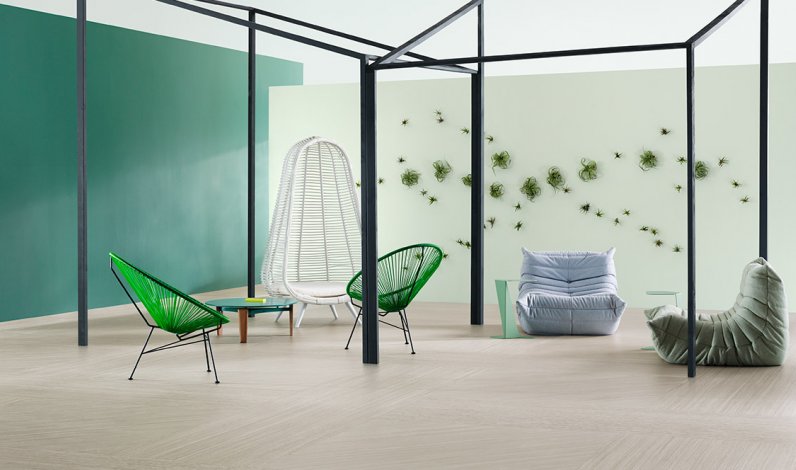About Marmoleum assembly. To weld or not to weld?
It should be noted at the outset that linoleum (marmoleum) is often confused with plastic flooring. In fact, it is an entirely natural and environmentally friendly material. Linseed oil, resin, wood flour (cork), as well as limestone and dyes are used in its manufacture. As a result, linoleum maintains the same colour and pattern throughout its lifetime. It is also not particularly demanding to maintain and does not harbour bacteria and fungi, which is important for the health of the occupants. Linoleum also has the advantage of being hardwearing, so it is largely resistant to mechanical damage (it hardens over time).
Before installing linoleum flooring, the subfloor should be properly prepared. If it is uneven, it is necessary to use a suitable levelling screed which will level out any differences in the floor plane. Afterwards, the whole floor should be sanded, all dirt should be removed and then it should be primed. A poorly prepared subfloor will result in unevenness, pebbles and, in extreme cases, an uneven concrete texture under the linoleum surface. In the final stage of use, over time abrasions may appear on the surface of such a floor covering leading to localised damage.
Properly installed Marmoleum will not shrink over time, so a welding rope is not required in most cases. An experienced and trained installer can trim the edges of the linoleum at the joins of the linoleum bricks so that welding with a cord is not necessary, it then forms an impermeable surface that can be wet-washed even without the use of a cord. If there are no special welding requirements, you can save installation time and cost by choosing an installation without the use of welding cords.
The advantages of installing Marmoleum without the use of welding cords are mainly:
- A more aesthetically pleasing solution devoid of weld lines, which disrupt the visual effect and accentuate the joints,
- Lower environmental impact by significantly reducing the amount of CO2 produced by eliminating the need for a high-energy welding machine to perform the seaming,
- Lower overall costs and reduced time consumption,
At the same time, the following is maintained:
- Water resistance
- Bacteriostaticity, independent studies have shown that using a solution without welding cords is just as hygienic as a heat-bonded PVC lining.
When is welding necessary?
Sometimes welding (heat welding) may be recommended or even required. In addition, local laws or ordinances require two sheets to be joined by welding.
Welding cords are available in matching colours for carpets, in both single-colour and multi-colour (multi-colour) versions. For decorative reasons, a contrasting weld colour can be chosen to accentuate the line of the carpet.







